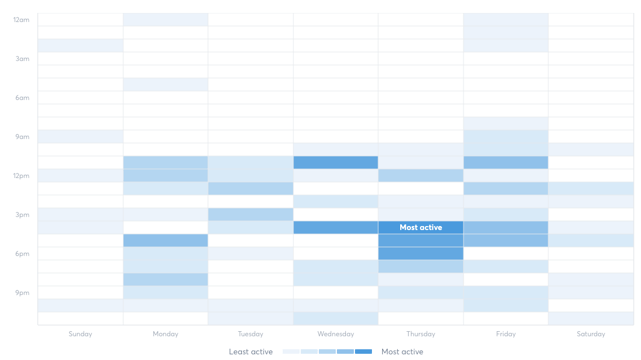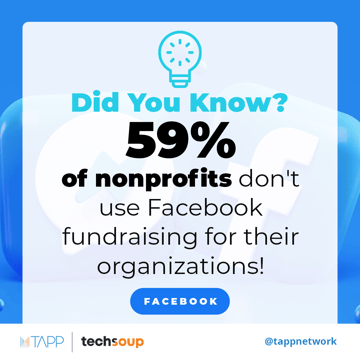In 2021, we expect to see the digital landscape continue to change as our ways of communication and connection settle back into a new normal. For that reason, we can expect social media to take an even more central role in nonprofits' ability to build, engage, and leverage their communities.

Between April and July of 2020, TechSoup, in partnership with the digital marketing and technology agency Tapp Network, built our first Nonprofit Digital Marketing Benchmark Survey. Our mission was to gather data on how nonprofits were responding to this drastic change and provide helpful insights and recommendations.
From paid advertising and email marketing to social media and content, we've uncovered the data your nonprofit can use to measure your digital marketing. In this first installment of a four-part series on our findings, we'll be taking a look at some key insights we found in the area of social media.
Social Media Benchmarks
Social media plays a crucial role in your organization's ability to build a narrative, activate your member base, and build personal relationships. When tied in with your content marketing, it is a powerful tool for finding new audiences that align with your organization's mission. Here are some of the most commonly asked questions we hear from nonprofits, followed by some relevant data and best practices we suggest.
How Often Should I Post?
This question is asked almost every time the topic of social media comes up, and it's definitely an important one to answer. Our data showed that 34 percent of nonprofits post once or twice a week, while 48 percent post three or more times a week.
So what is the right answer for your organization? It's all about your data. This benchmark helps you understand that posting once a week might be limiting your exposure to your audiences compared to other organizations. However, it's more important to test how your posts are performing. Start by creating a content calendar that will allow you to monitor when your posts see the most traffic and adjust your posting amount and times to correspond!
Here's a great example of this from the social media scheduling software Agorapulse. It tracks every post and the level of engagement to create a visual calendar of when your followers are more active on your content.

What Should I Be Posting About?
It can be challenging to identify exactly what an organization should be posting about on social media; so we asked! Out of all our surveyed nonprofits, 61 percent stated that their primary topic was "organizational "announcements," while 25 percent stated they primarily post "informational" content.
When it comes to topics, there's a tried and true rule that marketers follow. The 80/20 Rule says that 80 percent of your social media posts should inform, educate, and entertain your audience, while only 20 percent should directly promote your organization. Armed with this knowledge, and depending on your current approach at your nonprofit, you may want to consider developing more content that directly speaks to your audience's needs and interests.

Should I Use Facebook Fundraising?
With so many options, we have all wondered whether Facebook is a good platform for fundraising. As it turns out, our data from the survey showed that for those who are using Facebook to fundraise, 57 percent reported their fundraising efforts to be "somewhat" to "extremely" successful, while 17 percent reported "not successful at all," and 26 percent reported "not very successful."
In today's digital world, breaking through the continued noise of social media entails harnessing the first-person narrative and storytelling of those who believe in your mission. It's one way to make the case as an organization and develop a compelling narrative by giving your supporters the opportunity to share why your mission is important to them.
Using a platform like this allows for individuals to share and make the request to their friends and family. Leveraging this more personalized approach delivers a stronger and more compelling reason for others to support your mission.

3 Best Practices for Nonprofit Social Media
Based on our experience and finding, here are three best practices we believe will create the most impact that you can easily start today!
1. Avoid Content Fatigue
Diversifying the types of content you post within a month can help increase your overall engagement. For instance, avoid posting the same type of content, like an invite to an event or concert, a request for donations, impact video, and so on.
At Tapp, we use something called "content buckets" to avoid this issue. In our content calendars, we identify the type of content we're creating to ensure that we have a diverse use of content types to avoid this issue. Here are some examples.
- Video
- Quizzes
- Polls
- Blog posts
- Infographics
- Related national news
2. Schedule Your Posts Ahead of Time
Take the time and build your content ahead of time. Map out at least two weeks' worth of copy and graphics and a scheduling platform (HootSuite or Agorapulse) to automate your posting. This will save your organization time and money. A benefit to using these platforms is the ability to monitor how engaged your followers are for each post.
3. Engage and Respond to Your Audiences Regularly
When you post something, you're starting a conversation. It's important to consistently reply and engage with your followers who took the time to make a comment or share your posts. This will help with building and maintaining the relationships you've already built on your social media platforms.
While social media is a crucial component of your marketing strategy, it's only a piece of the whole. Be sure to download our 2020-2021 Nonprofit Marketing Benchmark Report to get all the insights you need to build a strong strategy for the year to come.
Ready to talk about your marketing strategies? Schedule a chat with a marketing expert.
Additional Resources
- Take TechSoup Courses' series on Social Media Marketing for Nonprofits and Fundraising for Nonprofits.
- Get the Digital Marketing DIY Kit and Coach; subscribe to TechSoup Boost for a reduced admin fee.








